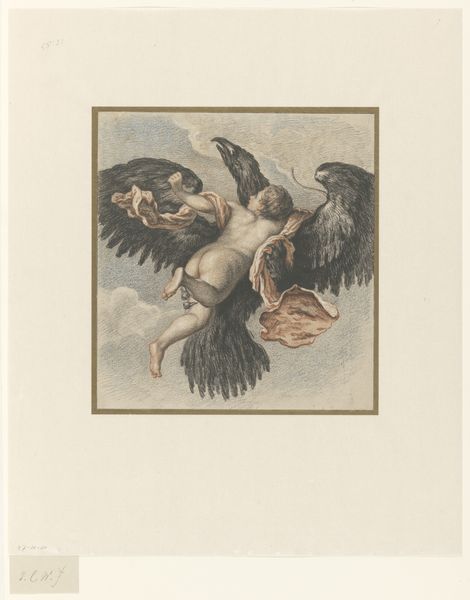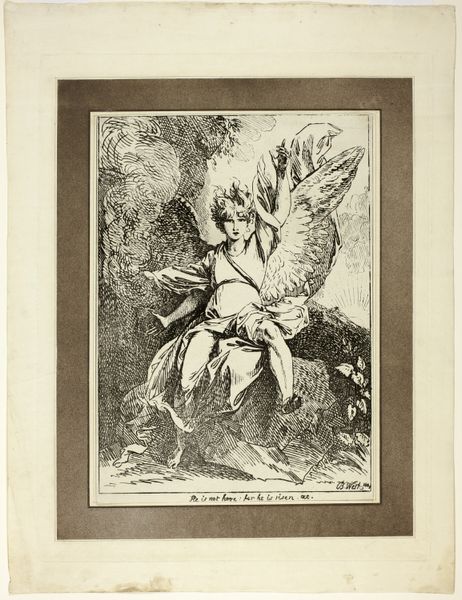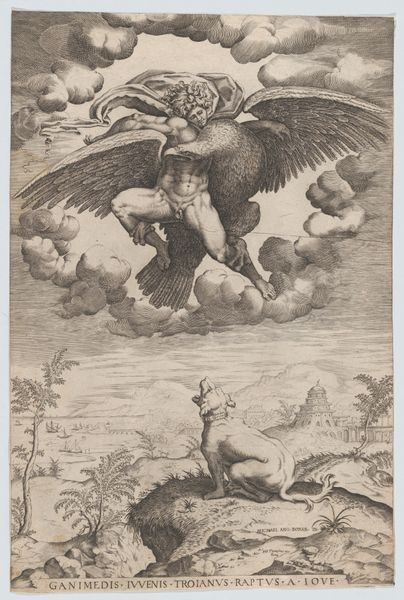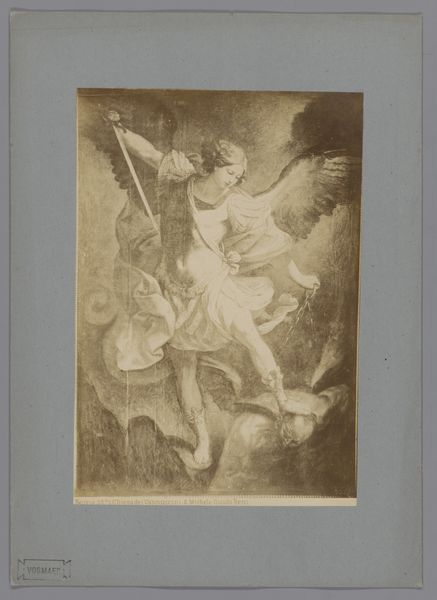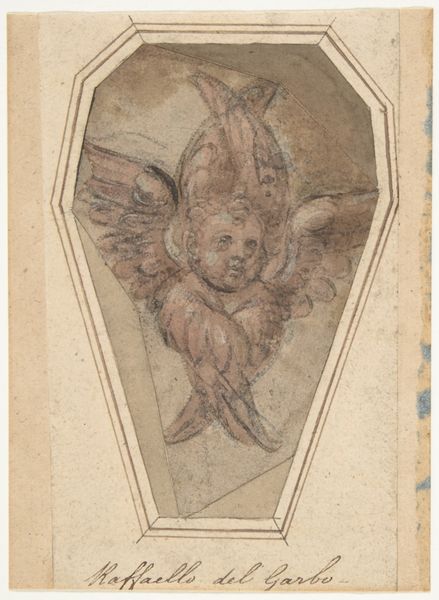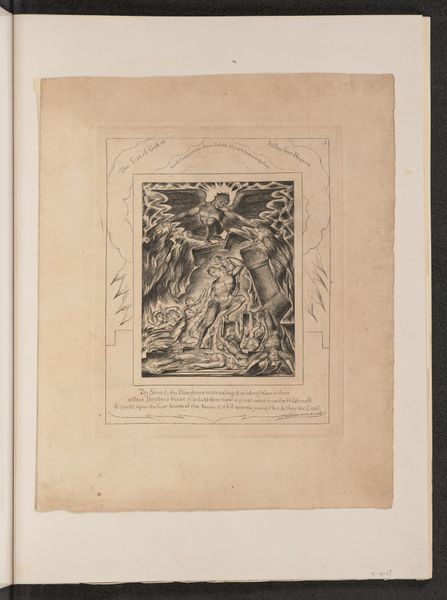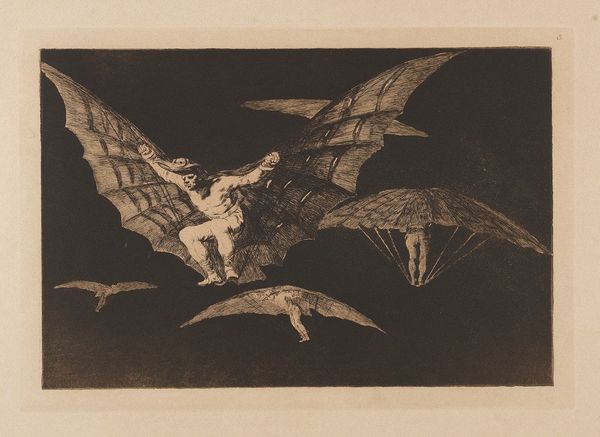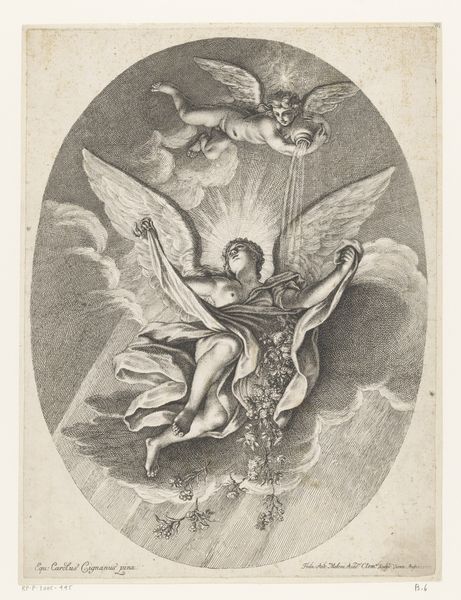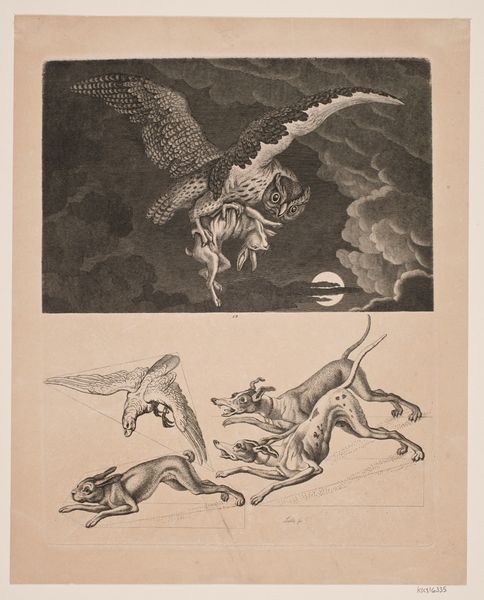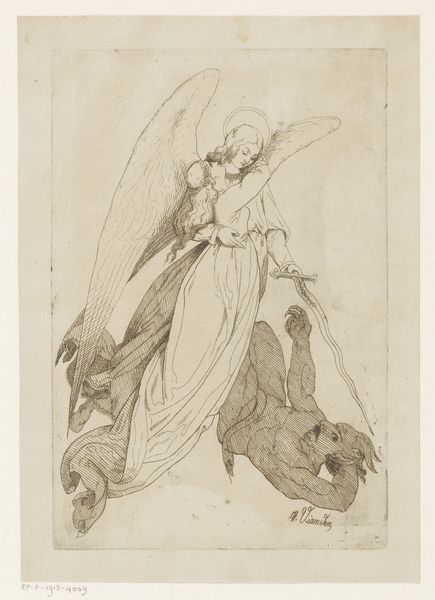
drawing, print, etching
#
drawing
#
allegory
#
baroque
# print
#
etching
#
etching
#
figuration
#
nude
Dimensions: 7 1/4 x 5 3/4 in. (18.4 x 14.6 cm)
Copyright: Public Domain
Joseph Heintz the Younger made this brown ink drawing titled ‘Jupiter and Ganymede’ sometime in the 17th century. It depicts a scene from Greco-Roman mythology, where Jupiter, king of the gods, transforms into an eagle to abduct the young Ganymede. The story of Ganymede was often used to justify or normalize pederasty within elite circles of the time, where same-sex relations between older men and adolescent boys were common. In this image, we see a winged Jupiter carrying Ganymede away, which visually encodes power dynamics of desire and possession. Consider the original viewers of this image, likely wealthy patrons familiar with classical stories and the art academies of the era. To interpret this drawing fully, we need to examine 17th-century social mores, the role of classical mythology in art, and the artist’s biography. Art history uses these resources to reveal how artworks reflect and shape the values of their time. This drawing isn’t just a pretty picture. It’s a window into the complex social and cultural landscape of 17th-century Europe.
Comments
No comments
Be the first to comment and join the conversation on the ultimate creative platform.
